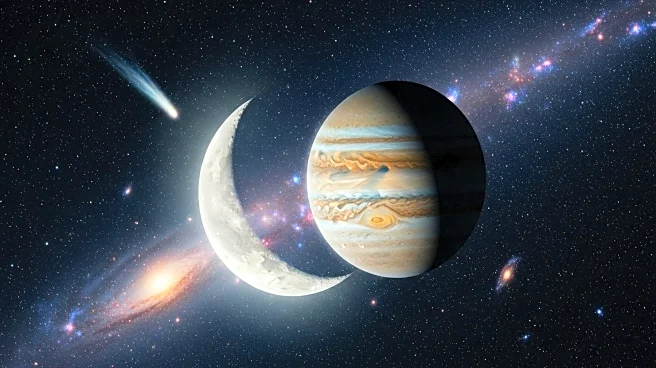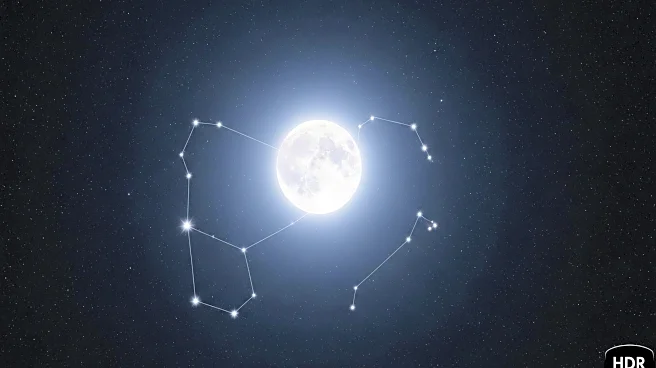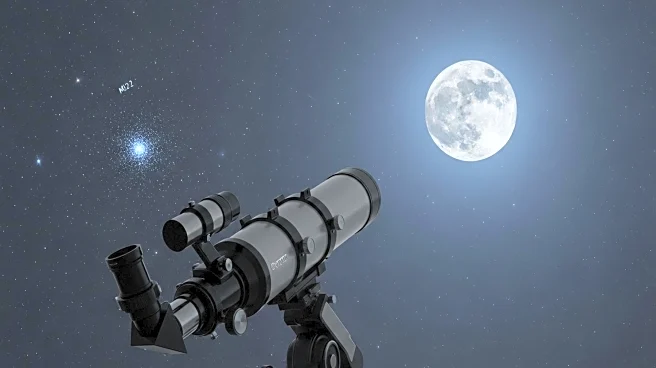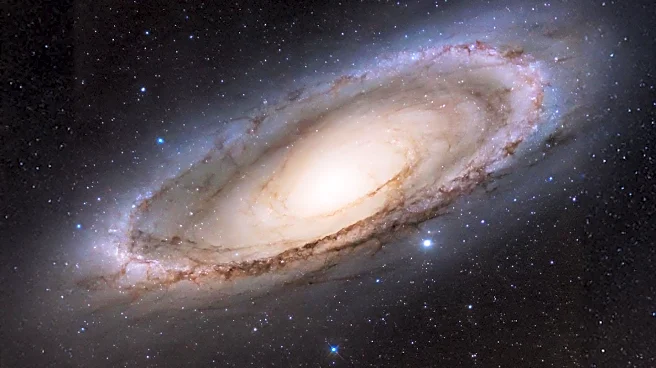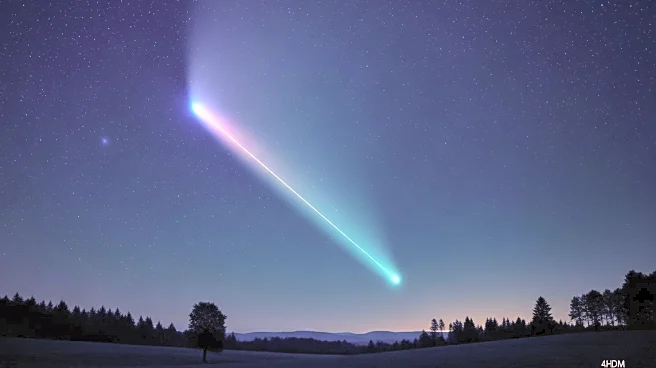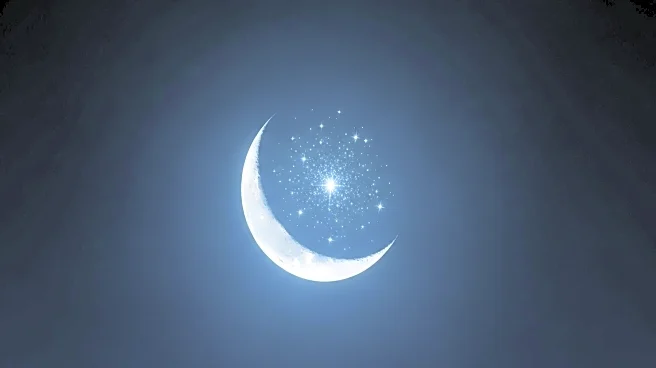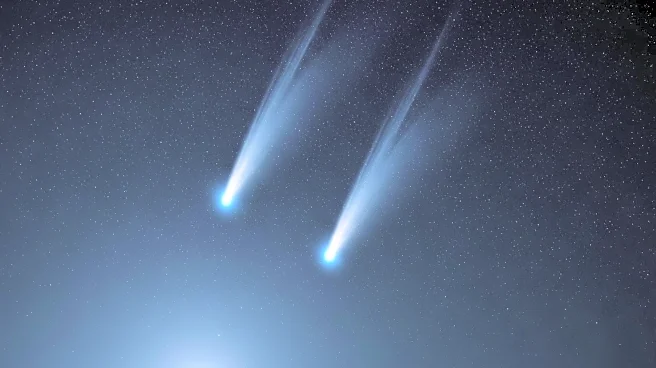What's Happening?
Astronomy Magazine's latest update focuses on the visibility of the Perseus constellation and the M34 star cluster. Rising higher in the evening sky, Perseus is renowned for its variable star Algol, known as the Demon Star. M34, a bright open cluster within Perseus, is visible at 40° high in the east by 9 P.M. local daylight time. Located in southwestern Perseus, M34 is just over 5° west-northwest of Algol. The cluster, glowing at magnitude 5.5, is visible to the naked eye from clear, dark sites and can be easily observed with binoculars or telescopes. M34 spans about the size of the Full Moon and contains approximately 100 stars, estimated to be 180 million years old.
Why It's Important?
The visibility of M34 and the Perseus constellation offers a unique opportunity for amateur astronomers and stargazers to observe celestial phenomena. The accessibility of M34 to the naked eye or through basic optical equipment makes it an attractive target for educational purposes and public interest in astronomy. Observing such clusters can enhance understanding of stellar formation and evolution, contributing to broader scientific knowledge. This event also encourages engagement with astronomy, potentially inspiring future interest and study in the field.
What's Next?
As the evening progresses, the constellation Perseus will continue to rise, providing extended viewing opportunities. Stargazers are encouraged to use binoculars or telescopes to explore the cluster's full extent and observe fainter stars within M34. The ongoing visibility of Perseus and its features may lead to increased public interest and participation in astronomy-related activities, such as star parties and educational programs.
Beyond the Headlines
The observation of M34 and Perseus may prompt discussions on the cultural significance of constellations and their historical roles in navigation and storytelling. Additionally, the study of star clusters like M34 can contribute to research on the lifecycle of stars and the dynamics within stellar groups, offering insights into the universe's structure and evolution.

